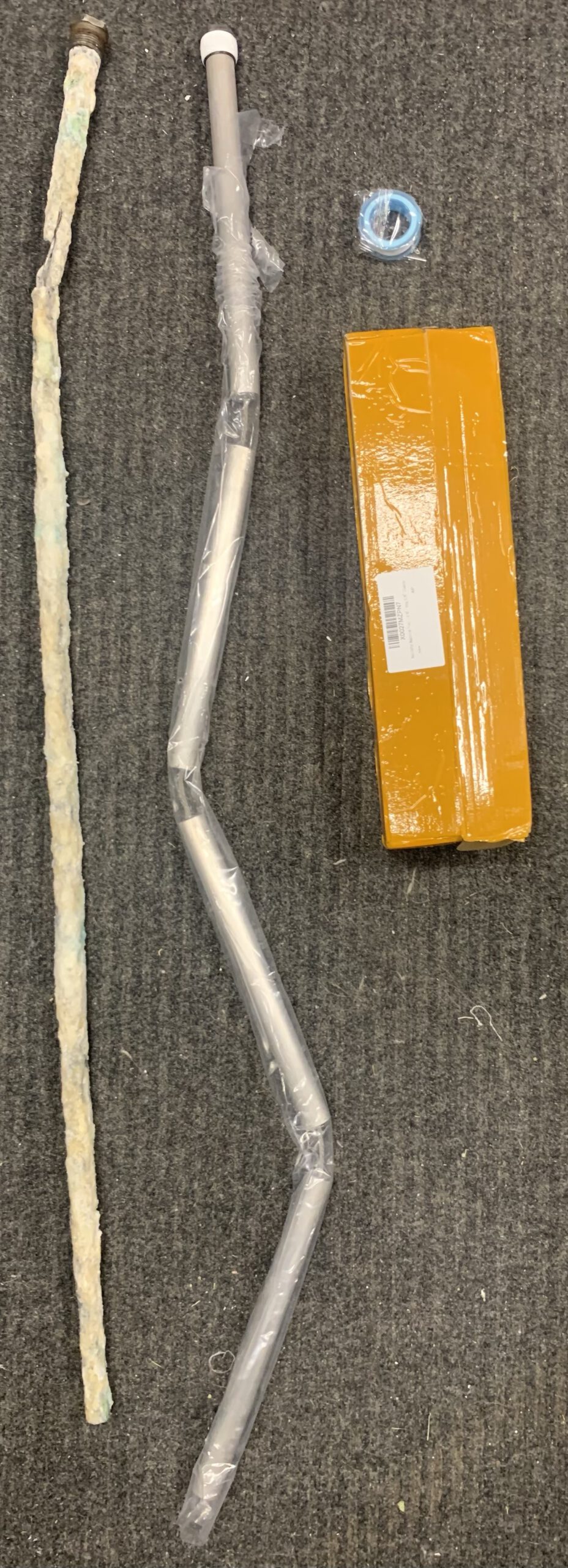I should have replaced our American Hot Water Heater VG6250T76NV’s magnesium anode years ago – COVID continues to give me a chance to catch up. Note: I’m assuming this water heater shipped with a magnesium anode, not an aluminum anode.
I measured the distance above my hot water heater and while my installation may allow clearance to fit an OEM 32-inch anode, it seems it will be very tight and may not fit. After watching an excerpt from This Old House, I learned about a collapsible or flexible anode that has been developed, so I’ll go that route so I don’t have to try and move plumbing out of the way.
If I had selected the non-flexible OEM part number, sold by a local supplier, Dey Appliance, they recommended this part calling for a 32-inch length anode with 3/4″ NPT, and 0.84-inch diameter. Ultimately, I selected an ApplianPar flexible magnesium anode, mostly because its close to meeting the specifications and is readily available – yes, its a bit narrower, but I’m fine to replace the anode more often from now on – shame on me for waiting this long.I’ll update this post after I install it tomorrow, assuming I can get the old one out, which worries me a bit. Which reminds me, I need to pick up a 1 1/16 inch socket!
** Update 10-2-2020 **
Dad loaned me his 1 1/16 socket (thanks Grandpa Don!) paired with his Campbell Hausfeld impact wrench. I used this combo in lieu of my Makita LXDT04 impact driver, which produces less than 1,000 kg/cm to the Campbell Hausfeld’s ~3,000 kg/cm, hello!
The old anode (far left in picture, below) backed out in less than a minute and with it came a load of scale from 10 years of build up, see photo below. Notice that the top of the old anode bent a little bit on its way out as very little magnesium remained, which made removing it even easier. Because of it bending on the way out and my previous measurements, I think it was the right call to go with a flexible anode for the replacement. Trying to get the flexible anode to screw in is a little challenging, but it seemed to snug up with only a turn or two. I was a little concerned about that, but after turning the water back on there are no leaks at the anode’s hex fitting.
After seeing the amount of scale on the old anode, I’m beginning to think I might need to reconsider softening my water. Saint Paul water is reportedly 5-6 grains of hardness, which MPCA classifies as “moderately hard”. The anode’s scale build up makes me question the condition of the copper pipe I installed to replace the galvanized cast iron piping shortly after we moved in 20 years ago. I’m guessing there will be more on this in a future post.

While researching this, I may need to take Merles up on their offer for a free lead test.
